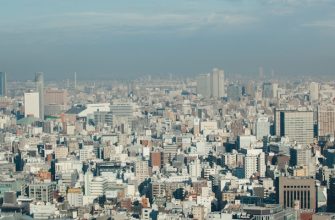- Urban Green Initiatives: Transforming City Spaces for Cleaner Air
- The Role of Eco-Projects in Mitigating Urban Pollution
- Innovative Solutions: How Cities are Reducing Their Carbon Footprint
- Community Engagement in Eco-Projects: A Path to Cleaner Atmospheres
- Success Stories: Cities Leading the Way in Atmospheric Restoration
- The Future of Urban Living: Sustainable Practices for a Healthier Environment
Urban Green Initiatives: Transforming City Spaces for Cleaner Air
Urban green initiatives play a crucial role in transforming city spaces and improving air quality. These eco-projects not only enhance the aesthetic appeal of urban environments but also contribute significantly to cleaner air. By integrating greenery into city landscapes, cities can combat pollution and create healthier living conditions for residents.
- Vertical Gardens: These living walls promote biodiversity while absorbing air pollutants and providing insulation for buildings.
- Urban Forests: Planting trees in city parks and along streets helps filter harmful particulates and produce oxygen, thereby enhancing air quality.
- Green Roofs: Installing vegetation on rooftops reduces heat absorption, mitigates the urban heat island effect, and improves air circulation.
- Community Gardens: These initiatives not only supply fresh produce but also foster community engagement and awareness about environmental sustainability.
- Pollinator Pathways: Creating corridors for bees and other pollinators aids in maintaining biodiversity and promotes ecological balance within urban settings.
Implementing these eco-projects in cities leads to a significant reduction in airborne pollutants. Each initiative plays a part in a broader strategy to enhance urban air quality. Moreover, the presence of green spaces has been shown to improve mental health and encourage outdoor activities, which further benefits community well-being.
As urban areas continue to grow, the importance of sustainable solutions becomes increasingly evident. By prioritizing urban green initiatives, cities can achieve a cleaner, healthier atmosphere, ultimately fostering a greater quality of life for all inhabitants.
The Role of Eco-Projects in Mitigating Urban Pollution
Eco-projects play a crucial role in combating urban pollution, significantly contributing to the improvement of air quality in metropolitan areas. These initiatives often involve the implementation of sustainable practices that not only reduce emissions but also enhance the overall urban environment.
- Green Spaces Development: The creation of parks and green roofs helps absorb carbon dioxide and other pollutants, making cities more breathable.
- Renewable Energy Sources: Utilizing solar panels and wind turbines in urban settings reduces dependency on fossil fuels, thus diminishing greenhouse gas emissions.
- Waste Management Improvements: Eco-projects that promote recycling and composting minimize waste and decrease harmful emissions released from landfills.
- Public Transport Initiatives: Expanding electric and hybrid public transportation options reduces the number of conventional vehicles on the road, leading to lower air pollution levels.
- Community Engagement: Involving local residents in eco-projects fosters a sense of responsibility towards maintaining a clean urban environment, encouraging sustainable practices.
By integrating these eco-projects into urban planning, cities can significantly decrease pollution levels. Moreover, the implementation of such initiatives not only benefits the environment but also improves residents’ health and quality of life. The collective efforts of governments, organizations, and communities in promoting eco-projects are vital for creating cleaner, greener urban spaces.
Ultimately, the effectiveness of eco-projects in mitigating urban pollution highlights the importance of sustainable urban development. As cities continue to grow, the emphasis on eco-friendly solutions is essential for ensuring a healthier atmosphere for future generations.
Innovative Solutions: How Cities are Reducing Their Carbon Footprint
In recent years, cities around the globe have been implementing innovative solutions to combat climate change and reduce their carbon footprint. These eco-projects focus on enhancing air quality and promoting sustainable living. By adopting various green technologies and practices, urban areas are not only cleaning the atmosphere but also setting an example for others to follow.
- Green Transportation: Many cities are investing in public transport systems powered by renewable energy sources, such as electric buses and trams. This shift not only reduces greenhouse gas emissions but also encourages residents to opt for eco-friendly commuting options.
- Urban Green Spaces: The creation of parks and green roofs is another effective strategy. These spaces help absorb CO2, improve air quality, and provide residents with natural habitats, contributing to biodiversity.
- Smart Waste Management: Cities are adopting advanced waste management systems that promote recycling and composting. By minimizing landfill waste, they significantly decrease methane emissions, a potent greenhouse gas.
- Energy Efficiency Initiatives: Many urban centers are retrofitting buildings with energy-efficient technologies. Solutions such as LED lighting, smart thermostats, and high-performance insulation help lower energy consumption and carbon emissions.
- Renewable Energy Projects: Utilizing solar panels and wind turbines has become more prevalent in urban settings. These renewable energy projects reduce reliance on fossil fuels and help cities decrease their overall carbon footprint.
As cities embrace these innovative solutions, they are paving the way for a cleaner, more sustainable future. The integration of eco-projects not only cleans the atmosphere but also enhances the quality of life for urban residents. Engaging communities in these initiatives ensures collective action towards sustainability, ultimately leading to a significant reduction in carbon emissions across the globe.
Community Engagement in Eco-Projects: A Path to Cleaner Atmospheres
Community engagement plays a pivotal role in the success of eco-projects aimed at cleaning the atmosphere in urban areas. By actively involving residents, cities can foster a collective sense of responsibility towards environmental preservation. These initiatives not only promote awareness but also encourage participation in local eco-projects, which are essential for reducing pollution and enhancing air quality.
- Awareness Campaigns: Local governments and organizations can conduct campaigns to educate citizens about the importance of clean air and how eco-projects can contribute to this goal.
- Volunteer Programs: Establishing volunteer opportunities allows community members to take part in tree planting, urban gardening, and other eco-projects that directly impact air quality.
- Workshops and Training: Hosting workshops on sustainable practices empowers individuals to implement eco-friendly habits in their daily lives, further supporting the objectives of local eco-projects.
- Partnerships: Collaboration between local businesses, schools, and environmental organizations can strengthen the impact of eco-projects, enabling a more comprehensive approach to atmospheric improvement.
In addition to direct participation, community feedback is invaluable. Engaging residents in discussions about eco-projects leads to better understanding and more effective solutions tailored to the specific needs of the area. This two-way communication ensures that eco-projects remain relevant and effective in addressing air quality issues.
Furthermore, celebrating the successes of eco-projects encourages ongoing community involvement. Recognizing the contributions of individuals and groups fosters a sense of unity and motivates others to engage in similar initiatives. When communities come together to support eco-projects, the cumulative effect can significantly enhance atmospheric conditions.
Ultimately, community engagement is not just an additive component of eco-projects; it is a foundational element that drives progress towards cleaner atmospheres in cities. By fostering a strong connection between residents and environmental initiatives, urban areas can create sustainable solutions that benefit both the ecosystem and public health.
Success Stories: Cities Leading the Way in Atmospheric Restoration
Urban areas around the globe are increasingly recognizing the importance of atmospheric restoration through innovative eco-projects. These initiatives not only enhance air quality but also inspire other cities to adopt similar strategies. Various cities have emerged as leaders in implementing successful environmental projects aimed at cleaning the atmosphere.
- San Francisco, USA: This city has pioneered a comprehensive approach to reduce vehicle emissions, promoting electric public transport and bike-sharing programs. The result has been a significant decrease in urban air pollution.
- Copenhagen, Denmark: Known for its ambitious goal of becoming carbon neutral by 2025, Copenhagen has invested heavily in wind energy and green infrastructure. The city’s commitment to atmospheric restoration is evident in its extensive network of cycle paths and green spaces.
- Beijing, China: Facing severe air quality challenges, Beijing implemented strict regulations on industrial emissions and vehicle usage. The introduction of a robust public transport system has dramatically improved the city’s air quality.
- Amsterdam, Netherlands: This city has embraced sustainability by promoting electric vehicles and reducing reliance on fossil fuels. Initiatives such as green roofs and urban gardens contribute to atmospheric restoration and biodiversity.
- Los Angeles, USA: With a focus on reducing smog, Los Angeles has launched several initiatives aimed at improving air quality. The city’s investment in renewable energy and public transport has played a crucial role in its success story.
These cities exemplify how eco-projects can lead to substantial improvements in air quality and overall environmental health. By sharing best practices and experiences, urban centers can inspire each other to undertake similar atmospheric restoration efforts, ultimately contributing to a cleaner and healthier planet.
The Future of Urban Living: Sustainable Practices for a Healthier Environment
The future of urban living is increasingly intertwined with sustainable practices that aim to create a healthier environment. Urban areas, often characterized by high population density and industrial activity, face significant challenges regarding air quality and pollution. Eco-projects in cities are designed to address these issues by implementing innovative solutions that can effectively clean the atmosphere.
- Green Spaces: The introduction of parks, green roofs, and vertical gardens mitigates air pollution and enhances biodiversity. These green areas not only absorb carbon dioxide but also release oxygen, contributing to cleaner air in urban environments.
- Renewable Energy Sources: Utilizing solar panels and wind turbines in urban infrastructures reduces reliance on fossil fuels. This transition to renewable energy sources is crucial for decreasing greenhouse gas emissions and promoting a sustainable urban ecosystem.
- Smart Transportation: Eco-friendly public transport systems, including electric buses and bike-sharing programs, encourage residents to opt for greener commuting options. This shift not only reduces traffic congestion but also minimizes air pollutants released by traditional vehicles.
- Waste Management Innovations: Implementing comprehensive recycling and composting programs helps to reduce landfill waste. Advanced waste management techniques can transform organic waste into energy, further contributing to a cleaner atmosphere.
These eco-projects in urban settings not only focus on cleaning the atmosphere but also aim to foster community engagement and awareness. By promoting sustainable living practices, cities can enhance the quality of life for their residents while ensuring a healthier planet for future generations. The integration of these initiatives is essential for transforming urban living into a model of sustainability, where a cleaner environment is a shared responsibility.








